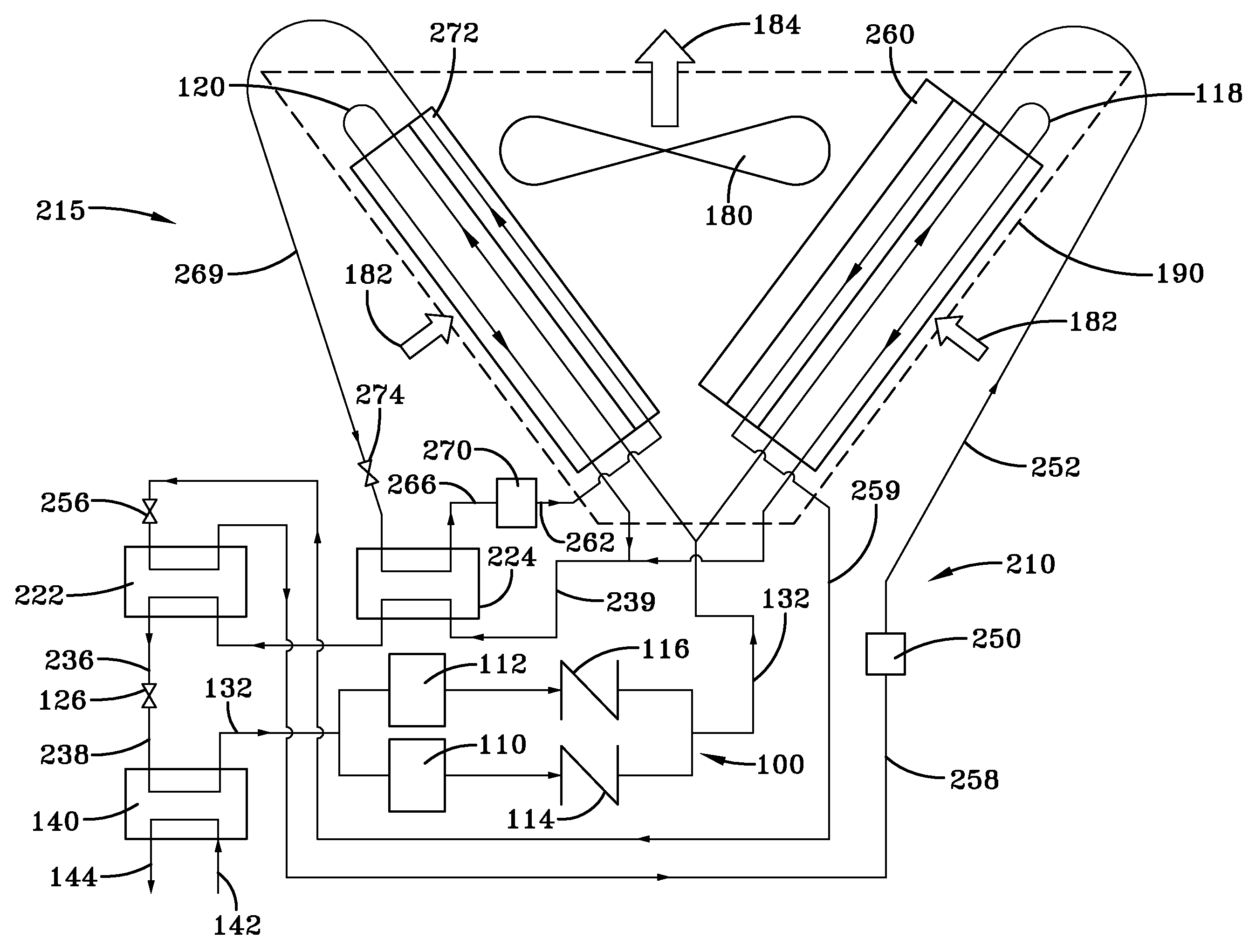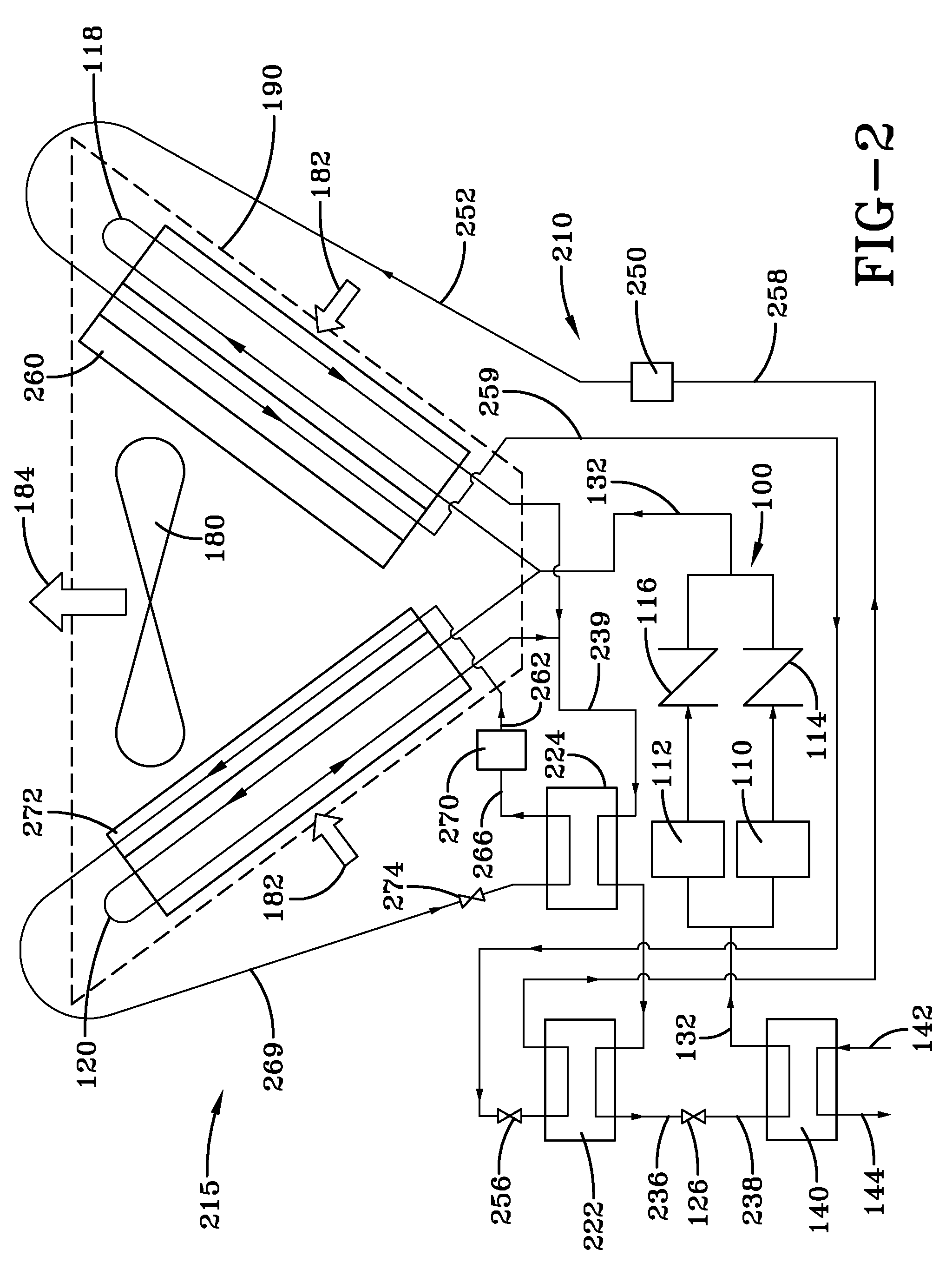HVAC system with powered subcooler
a subcooler and hvac technology, applied in the field of hvac systems, can solve the problems of limited compressor efficiency, compressor loss, general inability to fully realize the theoretical benefit of the economizer cycle, etc., and achieve the effects of increasing efficiency, increasing efficiency, and increasing capacity
- Summary
- Abstract
- Description
- Claims
- Application Information
AI Technical Summary
Benefits of technology
Problems solved by technology
Method used
Image
Examples
examples
[0046]Table 1 below includes the conditions for an air-cooled chiller according to an embodiment of the present invention. In this embodiment, the system cools refrigerant liquid in the main circuit 100 from about 105° F. (41° C.) to about 60° F. (16° C.) using two steps. The two steps correspond to the cooling that takes place in each of the first and second subcoolers 222 and 224. Refrigerant in the second subcooler circuit 215 is evaporated in second subcooler 224. The evaporating refrigerant in the second subcooler 224 exchanges heat with the main circuit 100. The heat exchange results in a temperature of the liquid refrigerant leaving the second subcooler 224 of about 78.5° F. (26° C.). The evaporating refrigerant in the first subcooler 222 exchanges heat with the main circuit 100. The heat exchange results in a temperature of the liquid refrigerant leaving the first subcooler 222 of about 60° F. (16° C.). The refrigerant, which has a temperature of about 60° F., is then transp...
PUM
 Login to View More
Login to View More Abstract
Description
Claims
Application Information
 Login to View More
Login to View More - R&D
- Intellectual Property
- Life Sciences
- Materials
- Tech Scout
- Unparalleled Data Quality
- Higher Quality Content
- 60% Fewer Hallucinations
Browse by: Latest US Patents, China's latest patents, Technical Efficacy Thesaurus, Application Domain, Technology Topic, Popular Technical Reports.
© 2025 PatSnap. All rights reserved.Legal|Privacy policy|Modern Slavery Act Transparency Statement|Sitemap|About US| Contact US: help@patsnap.com



